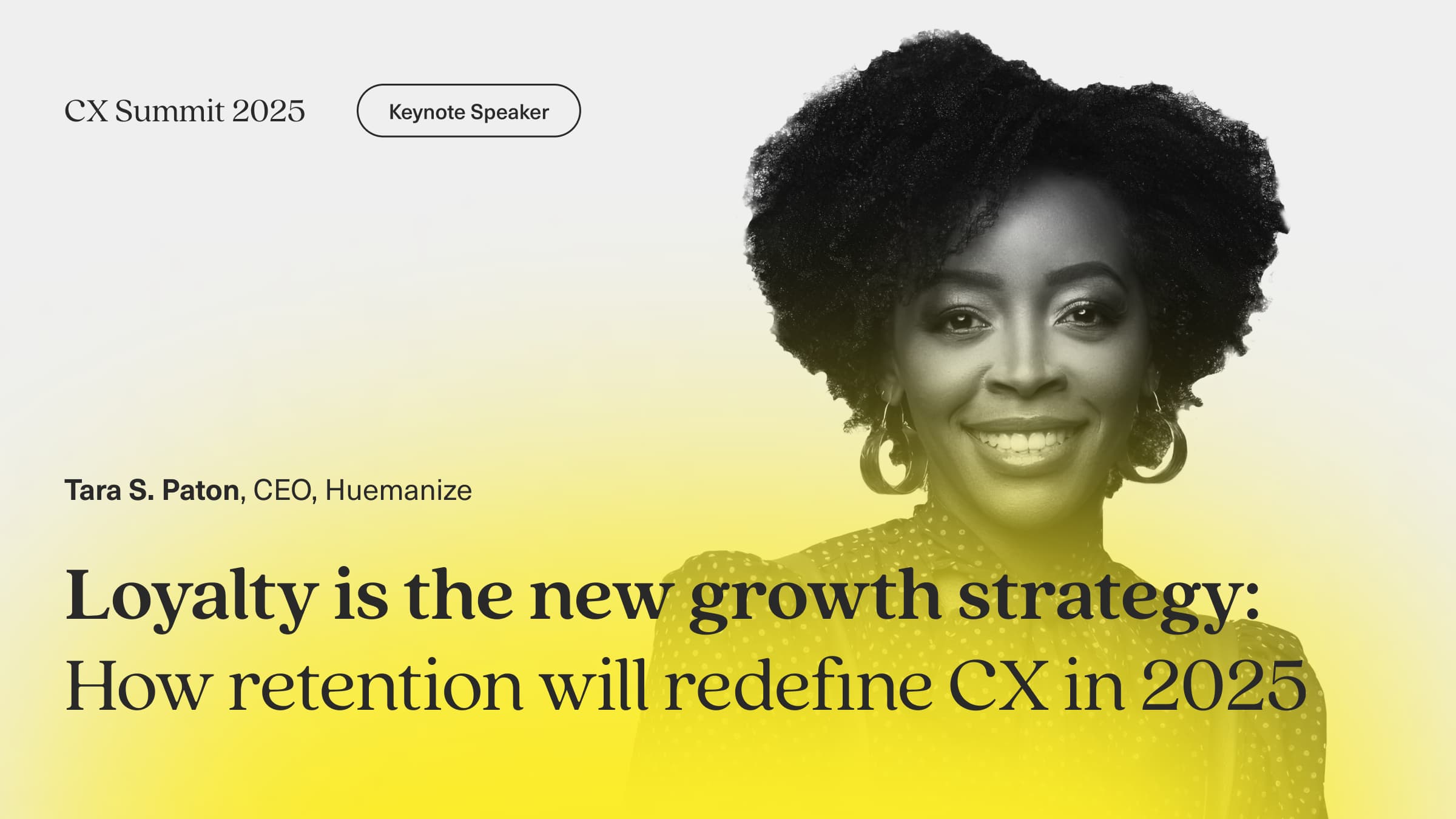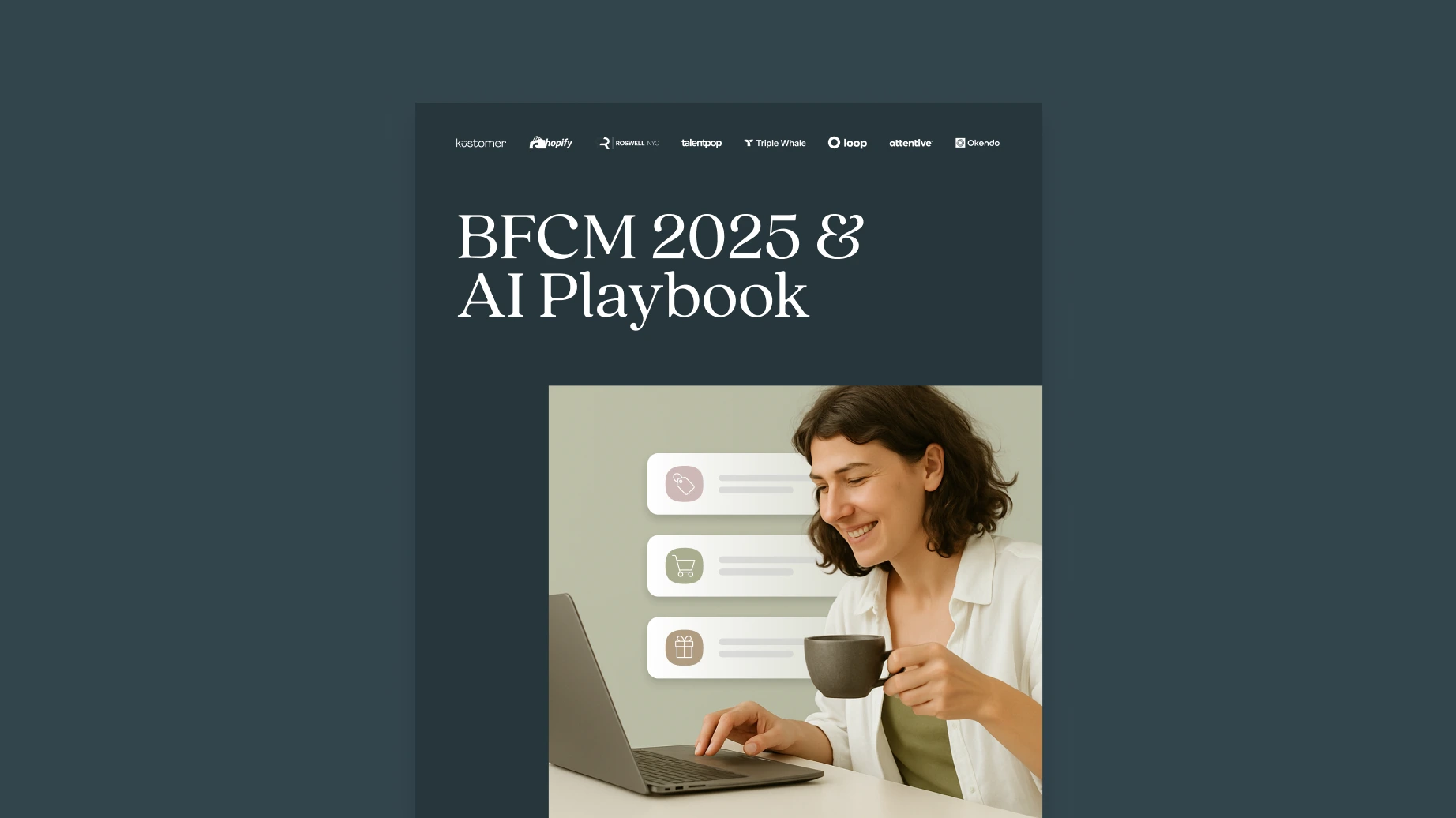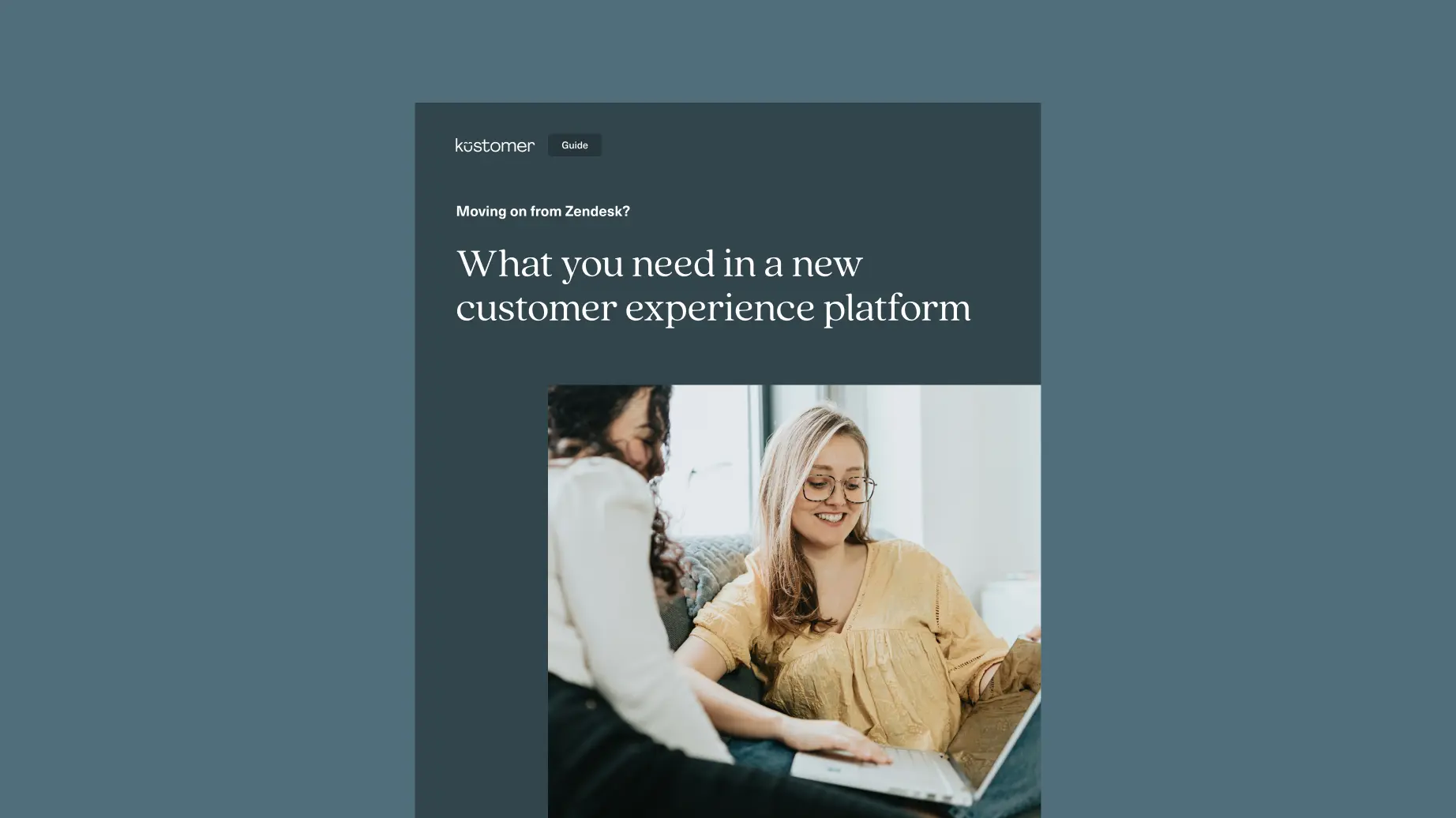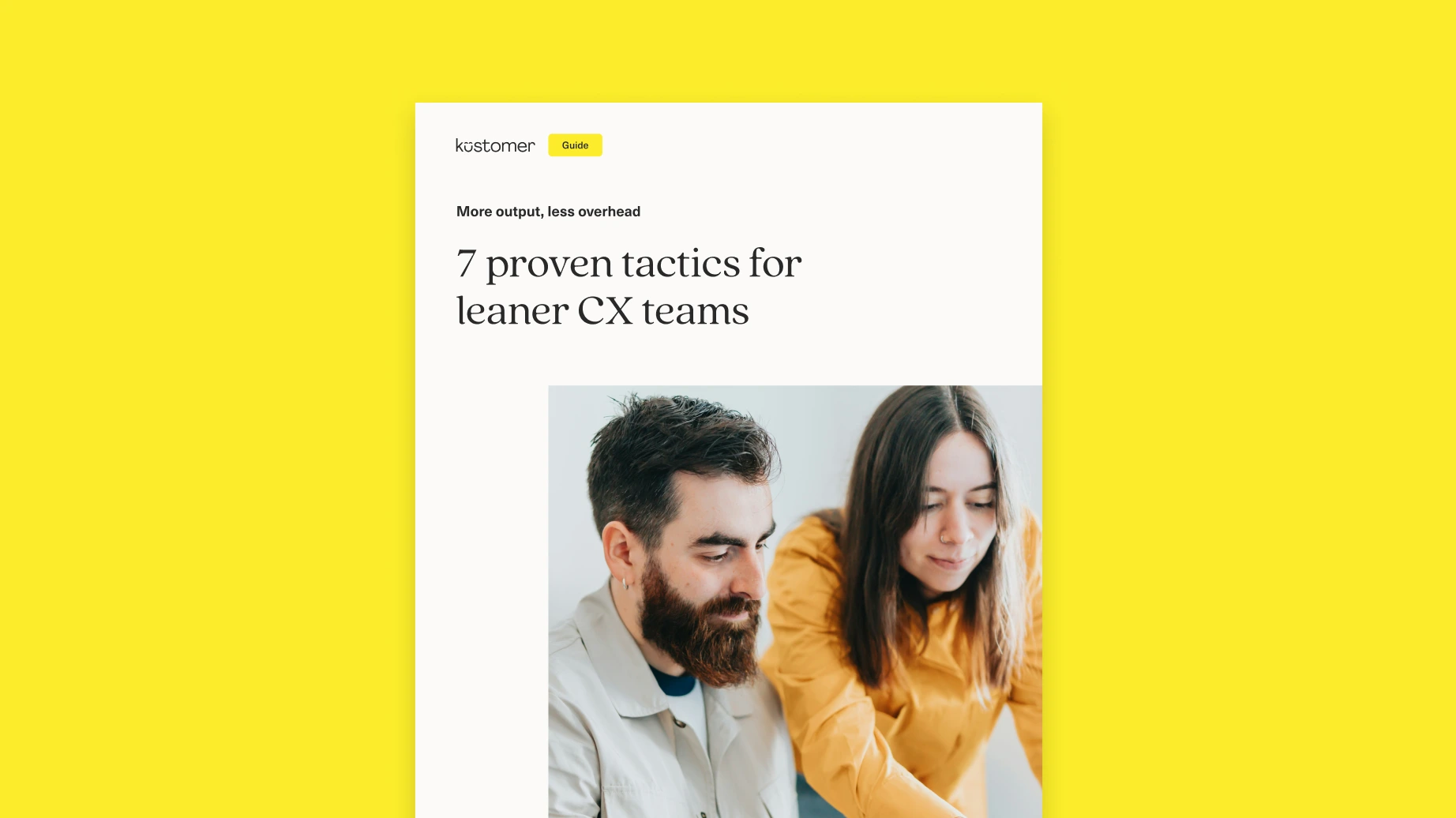In this CX Summit closing keynote, Tara Paton—CEO and founder of Huemanize, a firm that helps brands build loyalty programs—shares a powerful perspective on rethinking loyalty as a long-term growth engine. She explores why loyalty is gaining boardroom attention, how brands can build emotional connections with customers, and what it takes to embed retention into company culture and operations.
This interview has been edited for clarity.
Nupur Bhade Vilas: I’m really excited for this conversation because loyalty feels like it’s having a major moment right now—not in the traditional points and perks way, but in how the whole definition of loyalty is evolving. I’m looking forward to digging into the big shifts you’re seeing. So to start off: what’s the business case for investing in loyalty right now, and why is it becoming such a boardroom priority instead of just a marketing concern?
Tara Paton: That’s a really good question. I’m personally very excited that loyalty is finally getting the attention it has always deserved. It’s no longer treated as a side project—it’s seen as a strategic lever. The reason is pretty simple. In the past few years, acquisition costs have increased significantly. Most brands can’t afford to keep playing that game. You’re not going to be able to outspend your way into growth forever.
From a boardroom perspective, the conversation is shifting because executives are realizing that something has to change. Investing in loyalty isn’t just about launching a program or adding points to your website. It’s about intentionally building relationships with your customers. When you make consistent deposits into those relationships—just like with compounding interest—you see returns in both the short and long term.
Every customer you keep is one you don’t have to pay to reacquire. Boards want to understand the economics, and when you look at the long-term picture, the economics make a lot of sense. Especially in today’s economy, loyalty just feels like the right move.
Nupur Bhade Vilas: Totally agree. It’s like loyalty is finally getting promoted from the kids’ table to the adults’ table. Growth is tougher, customer expectations are higher, and brands can’t outspend their way to loyalty anymore. It has to be earned. You’ve described loyalty as a growth engine rather than just a reward system. Can you unpack that for us? What loyalty strategies have you seen actually move the needle on growth?
Tara Paton: Historically, brands would set up a loyalty program—usually a points-based one—and think that alone would build loyalty. It was often treated like an afterthought. But recently, larger brands have started to overhaul their traditional programs because they’ve realized these programs became liabilities. Customers weren’t engaging the way they hoped.
The key is to design a loyalty program that drives growth by influencing future behavior. When done right, it’s not just a thank-you after purchase, it’s about shaping what you want your customers to do next. Whether it’s coming back more often, cross-shopping categories, or referring friends, those behaviors have to be incentivized in thoughtful ways.
You’re not just building goodwill—you’re building revenue. A Harvard Business Review study shows that a 5% lift in retention can increase profits by 25 to 95%. That’s a huge impact on the bottom line. So companies are moving from rewarding transactions to shaping behavior. That’s when loyalty becomes a real growth engine.
Nupur Bhade Vilas: That’s so interesting. A lot of brands are still stuck thinking loyalty is about discounts or freebies. But what you’re describing is much more strategic—it’s about engineering growth into the business model. Many companies have loyalty programs, but not many have truly loyal customers. Where is the disconnect?
Tara Paton: There are two big traps. One is launching a loyalty program and then just leaving it there, assuming customers will magically become loyal. The second is assuming that because people joined your program, they are automatically loyal. But people often join for short-term rewards—points, coupons, cash back—not because they feel connected to your brand.
True loyalty goes beyond transactions. It’s about building trust, relevance, and consistency. When people feel seen, heard, and valued, they develop emotional ties. The same applies to businesses. Emotionally connected customers deliver three times more lifetime value than those who are merely satisfied. The goal isn’t just to enroll them—it’s to earn their trust and build a lasting relationship.
Nupur Bhade Vilas: Exactly. Just having a program doesn’t mean you’re winning customers’ hearts. So is there a brand that has really cracked this? Who is doing loyalty in a way that’s driving growth?
Tara Paton: Two great examples come to mind, both from the beauty space. First, Sephora’s Beauty Insider program. On the surface, it looks like a simple tiered system, but each tier unlocks meaningful perks—early access to sales, higher discounts, exclusive events. When I reached their top tier, Rouge, it felt special. I had time to shop before others, things were in stock, and I got better deals. That’s a tangible benefit that builds emotional connection. Sephora’s annual report even said 80% of their sales come from loyalty members. That’s powerful.
The second example is Glossier. When they started, they didn’t rely on points or tiers. They built loyalty by involving customers in the brand—crowdsourcing feedback, sharing customer stories, creating a sense of belonging. It’s more than community. Customers feel like they’re part of building something meaningful. In both cases, it’s about the relationship and experience, not just the rewards.
Nupur Bhade Vilas: Such great examples. I love how you framed it—not just rewarding transactions, but reimagining the entire relationship. Even with the right strategy, though, if your internal teams and culture aren’t aligned, it’s hard to bring it to life. What kinds of team or culture shifts are needed to operationalize retention?
Tara Paton: Loyalty cannot sit in a silo. It’s no longer just a marketing initiative. It has to be embedded across all teams—CX, product, frontline teams—because everything they do impacts loyalty.
I’ve seen companies tie loyalty metrics into their organizational success metrics and even performance reviews. As for which metric to use—whether it’s second purchase rate, churn, or customer lifetime value—that should be a company-wide conversation. But whatever it is, it has to be visible and meaningful across the organization. Loyalty isn’t just something you launch—it’s something you live every day.
Nupur Bhade Vilas: Such an important point. Internal alignment is just as critical—maybe more—than what you do externally. So tactically, if you’re a CX leader trying to spark that shift, what’s one thing you could do tomorrow to move in the right direction?
Tara Paton: Gather your CX, marketing, and product teams and have a huddle. Ask one question: what does loyalty success look like for us? You’ll likely get different answers from each team, and that’s OK. But it starts the conversation and builds alignment.
From there, work toward defining a shared metric. You may not solve it in one meeting, but at least people are thinking about it. Marketers will be excited that others care about loyalty. Make that metric visible—put it on a dashboard, talk about it often. If your customer lifetime value was X last month and your goal is Y, how can the CX team help move that number? It’s about getting teams excited and aligned around a shared goal.
Nupur Bhade Vilas: Completely agree. The real magic happens when retention becomes part of the daily mindset. Of course, even with alignment, there are still real-world challenges—especially around tech and data. How do you keep CX simple, personal, and effective when the tech is messy?
Tara Paton: I’ve never worked with a company where tech or data was perfect—and that’s fine. Don’t wait for perfection to move forward. You don’t need hyper-detailed data to make progress. Focus on customer behavior—what they bought, when they engaged, what categories they shop in. That’s enough to start personalizing effectively.
Segment based on what matters, not what’s creepy. You don’t need to know their shoe size unless you’re a shoe brand. Keep it simple. Use smart segmentation and relevant personalization. Done well, it can still drive revenue. But don’t wait for perfect conditions—just start.
Nupur Bhade Vilas: Such a powerful message—don’t wait. Doing nothing can cost you more than imperfect action.
Closing thoughts
Tara Paton’s session offered a fresh, strategic take on loyalty—far beyond points and perks. For customer service leaders, it was a compelling call to treat loyalty as a company-wide priority rooted in trust, consistency, and connection.
Key takeaways for customer experience leaders:
- Loyalty should be embedded across teams, not siloed in marketing
- Emotional connection drives long-term retention and value
- Start with the data you have—perfection is not required to begin
Ready to take the next step with loyalty as a CX strategy? Explore how Kustomer can supercharge how you show up for your customers. Check out our guide on consolidating your CX tech stack or talk to sales today.




